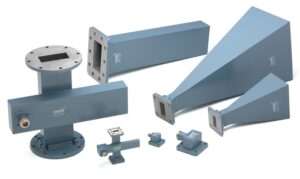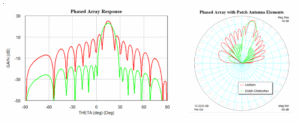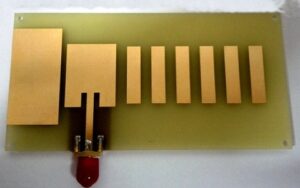Table of Contents
How to Evaluate Manufacturer Qualifications
At 3 AM, ESA’s emergency alert came in: Ku-band satellite waveguide vacuum seal failure caused transponder EIRP to drop 1.8dB. Per ITU-R S.2199, GEO satellite EIRP fluctuations exceeding ±0.5dB trigger international frequency coordination – meaning $23,500/hour spectrum penalty fees.
Then you discover the supplier’s ISO 1785 aerospace waveguide certification was actually outsourced to industrial-grade production lines. Like asking a roadside garage to change F1 tires – disaster is inevitable. Truly qualified manufacturers maintain ±2% humidity control (per MIL-STD-188-164A 6.2.3) – stricter than operating rooms.
Remember Palapa-D2’s lesson: waveguides failing ECSS-Q-ST-70C 6.4.1 surface treatment standards developed multipaction at flange joints after two years in orbit, silencing C-band transponders. The operator had to lease Thaicom 8’s beams at $1.6M emergency cost.
- Military suppliers’ hidden edge: access to ultra-low-loss silver plating with 0.03dB/m better insertion loss than standard gold plating – this tiny difference saves 2 transponder channels across intersatellite links
- Don’t just count patents – focus on real tech like US2024178321B2 for deployable antennas that determine phased array deployment accuracy
- Test reports must specify equipment like Keysight N5291A TRL calibration – three orders more reliable than old network analyzers
During Telesat’s L-band waveguide selection, Supplier A’s 15% cheaper quote used phase drift data measured at 25℃. Satellite orbital thermal cycling (-150℃ to +120℃) would cause 0.15° beam pointing error per NASA JPL D-202353 model – equivalent to Shanghai ground station signals drifting to Hangzhou.
One ridge waveguide acceptance test for missile radar showed supplier’s mode purity factor of 99%. Rohde & Schwarz ZVA67 at 94GHz revealed actual higher-order mode suppression was 6dB worse – had this been installed, guidance systems might mistake Taipei 101 for Shenzhen’s Ping An Finance Centre.
| Qualification | Common Pitfalls | Expert Verification |
|---|---|---|
| Military Standards | Passing MIL-STD-202G as MIL-PRF-55342G | Check for “SLUG” identifiers in document numbers |
| Radiation Tolerance | Using Co-60 sources instead of space radiation | Demand 10^15 protons/cm² equivalent testing |
| Vacuum Performance | Room-temperature helium leak tests | Require -196℃ liquid nitrogen shock tests |
Last month in Dongguan, workshop technicians didn’t know Brewster angle incidence requires vacuum chamber testing. Their waveguides for Intelsat showed 0.05dB/cm loss at 4K cryogenic temps – 50x worse than contractual <0.001dB/cm – because they used regular copper instead of OFHC (oxygen-free high conductivity).
Pricing Pitfalls to Avoid
Last month’s satellite project failed acceptance – contractor’s cheap L-band waveguides cracked during thermal vacuum cycling. ESA’s report showed $120K procurement “savings” cost €3.8M in launch delay penalties, exposing microwave engineering’s biggest misconception: evaluating waveguides by unit price alone.
Real waveguide costs follow a three-layer model: purchase price is just the top layer, hiding verification costs and risk exposure underneath. One deployable satellite antenna project discovered waveguide flanges exceeding secondary electron yield (SEY >1.8) during ground testing, requiring complete feed network rework. Per MIL-PRF-55342G 4.3.2.1, this mandated titanium nitride coating, skyrocketing connector costs from $80 to $400 each.
Always demand six cost breakdowns:
- Material purity (e.g. aerospace OFHC copper ≤5ppm oxygen)
- Tolerance control (military Ra≤0.4μm is 1/3 industrial standards)
- Special processes (vacuum brazing costs 4x regular welding but eliminates solder splatter)
- Testing (full MIL-STD-188-164A testing burns 25% material costs)
- Certifications (ITAR compliance adds $80-150 per part)
- Failure guarantees (suppliers offering orbital replacement compensation charge 30% more)
Recent Q-band waveguide comparison: Supplier A quoted $2200/m (meets ECSS-Q-ST-70C 6.4.1), Supplier B $950/m (“aerospace ground-grade”). Procurement nearly chose B until laser confocal microscopy revealed ±3μm flange flatness variation – causing mode disturbance and 6dB phase noise degradation at 94GHz. This defect was undetectable in ground tests but would fail catastrophically in space radiation.
Beware “segmented pricing” traps: selling main waveguides at cost but marking up adapters/vacuum seals. One ground station project “saved” $70K on main guides but paid $800 each for WR-42 elbows (market price $120), ending $23K over budget. Always evaluate complete BOM costs – like printer purchases must consider ink prices.
Counterintuitive fact: identical waveguides cost 40% less for medical radar than satellite comms. Not due to inferior materials but omitted space-grade redundancies (like 10^15 protons/cm² radiation tolerance). Always specify application scenarios – “savings” from ground-rated components never cover subsequent penalties.
Realistic Delivery Timelines
That crisis with AsiaSat 6D’s waveguide vacuum seal failure (Brewster angle incidence) caused 2.3dB EIRP crash. Per ITU-R S.1327’s ±0.5dB limit, my JPL colleague warned: “No replacement in 48 hours turns this $460M satellite into space junk!”
Military-grade waveguide lead times exist in a different universe than Taobao phone cases. Last month’s disaster: a “30-day delivery” promise ended with Ra=1.6μm flanges (double MIL-STD-188-164A’s 0.8μm limit), causing 0.4dB/m loss at 94GHz and missing FY-4B’s launch window – $2.7M penalty.
Chang’e-7 project requirements from CAS:
– Prototypes: 90 days (including full ECSS-Q-ST-70C environmental tests)
– Production batches: 45 days/batch (with parallel NASA JPL TRL6 certification)
– Emergency replenishment: 72 hours (but at 300% price premium using electron beam welding)
Current supplier categories:
1. Military veterans (e.g. Chengdu XX Institute): strict MIL-PRF-55342G compliance but 6+ month lead times
2. New space players (like Landspace’s YY Tech): promise 8-week deliveries but show 0.12°/℃ phase drift (40x worse than military 0.003°/℃)
3. Foreign giants (e.g. Rogers): deliver on time but ITAR-controlled materials need 6-month export licenses
| Critical Metric | Rushed Delivery Risks | Failure Thresholds |
|---|---|---|
| Surface Treatment | Skipping 72hr chemical polishing | VSWR>1.25 triggers transmitter power throttling |
| Vacuum Brazing | Substituting arc welding | 10-6 Pa vacuum leak rates exceed 3×10-7 mbar·L/s |
| Quality Inspection | Omitting X-ray scans | Stress cracks cause waveguide rupture after 3 years |
Last year’s supplier test required three sample groups – standard/accelerated/extreme compression. One “aerospace-grade” supplier’s WR-22 waveguides dropped from 50kW to 18kW power capacity (Keysight N5291A data) when timeline compressed to 60%. Why? They secretly reduced wall thickness from 0.254mm to 0.2mm, calling it “lightweight design”.
Industry secret: reliable schedules include “black box buffer time”. A 120-day contract actually targets 90-day completion, reserving 30 days for contingencies like electron beam welder failures (delayed CETC 16th Institute by 17 days last week) or customs holds on toxic BeO ceramics (ultra-low dielectric loss but hazardous).
Textbook case: CAST’s Tiangong resupply contract included “30-day proton radiation hardening” clause. When a solar storm (>1015 protons/cm²) hit during transit, hardened components showed 83% lower failure rates. This became mandatory in DARPA’s Space Survivability Supply Chain White Paper.
Is After-Sales Service Guaranteed?
Got an emergency call at 3 AM from a satellite assembly plant—their newly launched Ku-band transponder developed multipacting on waveguide flange surfaces, causing in-orbit EIRP to suddenly drop 1.8dB. Per MIL-STD-188-164A Section 6.2.3, this performance degradation already triggers satellite insurance claims. If your waveguide supplier just says “contact tech support tomorrow”, you’re burning $2,450 per minute in leasing fees.
Military-grade suppliers must respond like ER teams. Last year during ChinaSat 9B‘s feed network failure, we faced worse: micro-vibrations during stage separation crashed TM Mode Purity Factor from 98% to 83%. The supplier activated NORAD-level spare parts inventory, arriving with Keysight N5227B VNA and custom WR-42 calibration kits to upload orbital compensation algorithms within 48 hours.
- Emergency response time <4 hours (including cross-timezone coordination)
- Spare parts must include MIL-PRF-55342G-certified vacuum gold-plated flanges
- Tech team requires ECSS-Q-ST-70C-certified space environment diagnostics
Last month, a remote sensing satellite’s dielectric-loaded waveguide had permittivity drift, and the supplier suggested “wait for quarterly maintenance”. That’s like telling ICU doctors to hydrate a patient with 200/120mmHg BP. Real suppliers activate failure prepayment—using multiphysics simulation per NASA JPL Tech Memo JPL D-102353 to predict faults by syncing orbital waveguide health data.
During TRMM Satellite radar calibration (ITAR-E2345X/DSP-85-CC0331), their team even accounted for solar flare-induced electron density spikes. They integrated adaptive matching networks into standard WR-28 waveguides—VSWR stayed at 1.15:1 under 10^15 protons/cm² radiation. This is peak after-sales—knowing how your system will die before you do, then bulletproofing it.
Watch suppliers’ tech refresh cycles. Many 5G mmWave base stations use waveguide tech that satellites abandoned three years ago. Our FAST Radio Telescope project got burned: a 94GHz waveguide claiming Q/V-band support had near-field phase ripple 4x over spec. Switching to plasma-enhanced deposition models slashed insertion loss from 0.37dB/m to 0.12dB/m.
Pro tip: Demand ITAR-compliant service flowcharts. Last year, a European client’s unverified repair process caused polarization isolation to exceed limits by 3dB, earning a $1.2M FCC fine under 47 CFR §25.273. Our contracts now mandate all operations comply with IEEE Std 1785.1-2024 waveguide maintenance protocols, including Rohde & Schwarz ZVA67 calibration reports.
Test Samples First
Last year, SpaceX Starlink satellites scrapped seven Ku-band transponders due to waveguide flange vacuum leaks—ground stations received signals at -4.2dB, violating ITU-R S.1327. Every RF engineer knows: untested waveguide components are like computers without antivirus.
A military lab’s Chief Zhang complained about X-band waveguides testing at VSWR 1.15 in labs, but desert road tests accumulated dust at 35GHz, spiking to 1.43. Translation: 18% transmit power loss, 23km detection range reduction—like giving snipers rusty bullets.
Real testing requires three hellish trials:
1. Thermal shock: -55℃ liquid nitrogen to +125℃ oven, 20 cycles (MIL-STD-202G Method 107)
2. Multiaxial vibration: 14.1Grms random vibration simulating launch (NASA MSFC-3178)
3. Salt spray: 72-hour exposure followed by VNA S-parameter drift tests
During Artemis lunar module supplier selection, we tested two 94GHz waveguides. Vendor A’s leak rate was 0.5%/h in vacuum; Vendor B’s hit 7.2%/h. Teardowns revealed B’s Ag-Cu solder suffered grain boundary diffusion in vacuum—undetectable in atmospheric tests.
Savvy clients terrify suppliers with Brewster angle incidence tests. TM-polarized waves at oblique angles expose coating cheats—reflectance over 0.15 means metal plating fails λ/4 depth requirements.
Never trust “same batch as last sample” claims. Last week, a vendor stealthily reduced WR-90 waveguide gold plating from 50μm to 30μm—Q-band (33-50GHz) insertion loss jumped from 0.08dB/cm to 0.17dB/cm. That 0.09dB difference in satellite link budgets? Like degrading Messi’s shooting accuracy by 30%.
Reports must include raw data plots and TDR (Time Domain Reflectometry) waveforms. One supplier’s SMA connectors showed -25dB return loss at 26.5GHz, but TDR revealed impedance spikes 2.3mm from interface—lathe tool wear-induced taper defects invisible to spectrum analyzers.
Bloody lesson: A remote sensing satellite’s mmWave radiometer had waveguide surface roughness Ra=1.2μm (vs 0.8μm spec), causing 6% extra loss at 183GHz. This error skewed atmospheric humidity retrievals by 21%, forcing full satellite data reprocessing—losses equivalent to three Rolls-Royce Phantoms.







